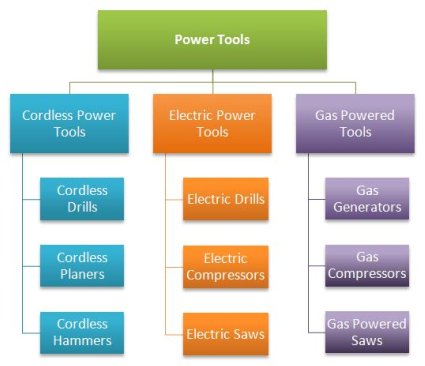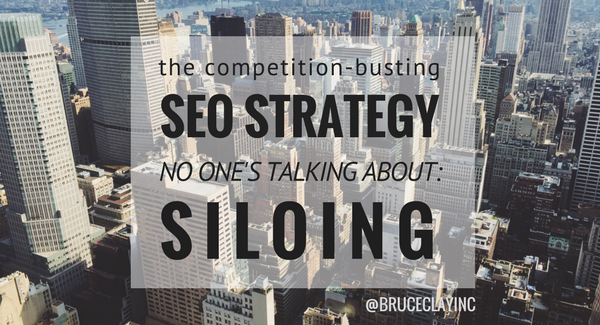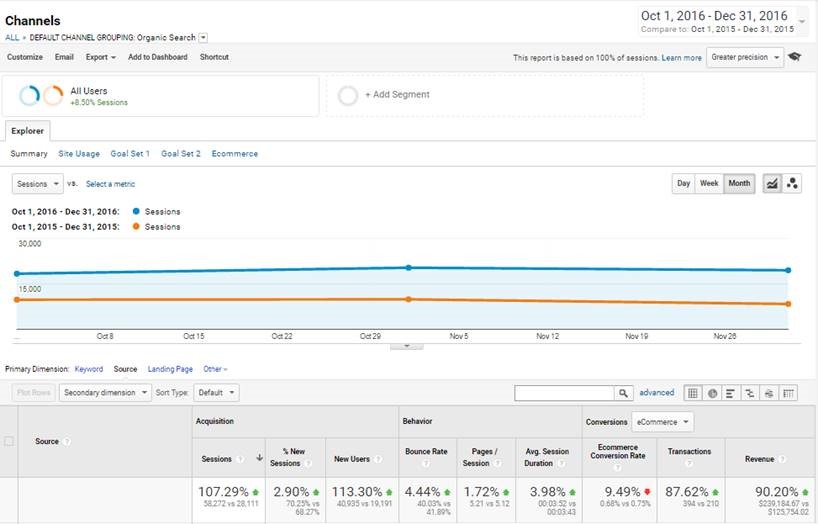The Competition-Busting SEO Strategy No One Is Talking About: Siloing Your Site was originally published on BruceClay.com, home of expert search engine optimization tips.
What if I told you that the way most websites are structured is completely wrong for search marketing?
And then what if I told you that there was a proven way to structure your website to:
- Boost its relevancy for search engines
- Drive more organic search traffic
- And gain a massive competitive advantage?
Let me tell you more …
It’s an SEO strategy that’s been around for a while, yet the majority of brands — even bigger brands — aren’t utilizing its power to improve their site’s rankings, relevance and usability.
You’ll gain a competitive advantage as I explain in this post:
- Why website architecture is the key to making your site relevant to the search engines.
- How the organization of your content positions you as a subject matter expert and creates a good user experience.
- Case studies that show the power of website architecture for SEO.
Website Architecture: The Wrong Way
It may or may not surprise you that the majority of website designers and developers are not skilled in search engine optimization.
Yet, these are the folks who are in charge of designing your website.
And the design of your site, from the code to the layout to the architecture, impacts your SEO strategy.
So why aren’t more brands building SEO into their website from the start? Simply put: no one is really talking about SEO during a website launch or redesign.
Most brands today design their sites like brochures, focusing on colors, look and feel and high-level business objectives.
Topic-focused content organization is overlooked. The problem with that is it doesn’t create subject matter expertise in the search engines’ eyes.
If you were a search engine, which of these would you rather show to users?
The garage without order or the garage with a clear focus?
Our job as website publishers is to help the search engines better understand what our business is about.
To do that, we have to hit the mark when it comes to look and feel and colors, but also content depth and organization. Google’s algorithms are getting smarter, but they still need a lot of help.
To better understand that a business is about X and has subject matter expertise about X, you need to create a cluster of organized content around X versus just mentioning it in a few words on pages randomly throughout your site.
And by the way, doing this will help you in a RankBrain world, where the machine learning AI system is working hard to match a search query to the best possible website.
Website Architecture for SEO
OK, now let’s talk about the right way to structure a site for SEO.
We invented siloing for SEO 17 years ago and have taught and written about it ever since.
This is something you should consider when you’re launching a new website, redesigning an old website or trying to implement a more powerful SEO strategy.
Organizing your website’s content, through directory structure and links, in a way that conveys subject matter expertise to search engines is an SEO methodology I devised years ago, and it’s called siloing.
Siloing is organizing a website’s content by heavily queried themes to make it clear what topics a site is about.
Put another way, siloing attempts to take a website with disjointed areas of focus and make sense of it by organizing the content.
Why is this important? A disorganized site doesn’t clearly convey what it is about. So a disorganized site can negatively impact your search rankings, and thus traffic.
When you organize your website content by topic or theme, search engines can see that you have sufficient content around Topic X, and that you are probably a relevant choice for a query on X.
Remember, one of Google’s key recommendations is to have a site with a clear structure and information-rich content.
Here’s an excerpt of Google’s recommendations from its Webmaster Guidelines:
- Create a useful, information-rich site, and write pages that clearly and accurately describe your content.
- Think about the words users would type to find your pages, and make sure that your site actually includes those words within it …
- Design your site to have a clear conceptual page hierarchy.
Siloing: What You Need to Know
Siloing is a highly technical and strategic SEO process. I won’t go into the technical details here, although you can find them in this guide to SEO siloing.
Instead, I’m going to share with you the guiding rules of siloing, so that you can consider it for your own website.
Siloing starts with sufficient website content around the topics and ideas that are crucial to your business.
In SEO-speak, your site needs to have lots of content that uses your target keywords.
Let’s look at an example. Say your website sells power tools. A website with disorganized focus may cover all the types of power tools on one page.
A website that has siloed its content might instead organize the various types of power tools it sells like this:

And by the way, each one of those pages represents a primary target search keyword and mentions the keywords common to their own themes.
This is not only a way to create a more streamlined user experience for your visitors, but also a way to tell Google that you are an expert on the various categories of power tools you sell.
That’s because there’s a clear hierarchical structure that makes it easy for search engine bots to crawl and understand the relationships and focus of topics.
In its simplest terms, here are the steps for how to do siloing for SEO:
Step 1 to siloing is knowing your keywords.
Step 2 is understanding how people search.
Step 3 is having ample content.
Step 4 is organizing topics and supporting topics hierarchically.
Step 5 is using internal links to connect related pages.
All of these pieces are critical to establishing your site as an expert.
The technical implementation instructions for SEO siloing are outlined here.
But now, let’s look at some results, shall we?
The Power of Siloing: 2 Case Studies
Siloing is a foundational component of our SEO services, and clients see powerful results.
Let’s look at a couple examples of real client results now.
Understand that the siloing strategy in these cases didn’t exist in a vacuum. There were other SEO-driven revisions that occurred along with the website architecture edits and internal linking of siloing. However, it is our experience that every SEO tactic is amplified once siloing is in place.
Case Study No. 1: Manufacturer of Custom, Specialty Home Construction Parts
This client came to us due to a link penalty from Penguin. But they also wanted us to migrate their site from a .net domain to their Unix-based .com, and from a custom CMS to WordPress. We found this to be a perfect opportunity to silo their content.
For this engagement, we did the following:
- Link pruning
- Physical and virtual siloing
- Reorganized navigation
- Internal contextual linking to related pages
- Breadcrumb linking
- Targeted anchor text
- On-page title tag and meta description optimization
Here are the results:
- 107 percent increase year-over-year (YoY) organic traffic, from around 9,000 visits per month to around 20,000 visits per month
- 30,000 additional organic visits YoY in Q4
- 90 percent increase in tracked online revenue YoY
- 88 percent increase in number of transactions YoY
Case Study No. 2: California Health Insurance Plans and Easy Enrollment Website
This client had a new domain with very little content. They needed to identify the top keywords to target and the supporting content that would help them reinforce their primary keywords. Site architecture and internal linking structure would need to be established.
Here’s what we did:
- Physical and virtual siloing
- Reorganized navigation
- Internal contextual linking to related pages
- Breadcrumb linking
- Targeted anchor text
- On-page title tag and meta description optimization
And here are the results we saw:
- 327 percent increase YoY in Google organic traffic, from around 2,ooo visits per month to around 10,000 visits per month
- 19,000 additional Google organic visits YoY in Q4
Start Siloing for a Competitive Advantage
Siloing can be the most powerful tool in your SEO arsenal, and yet many brands aren’t even aware of it. Talk about a competitive advantage to siloing adopters.
If your website needs a boost in relevancy and a lift in organic search traffic, siloing your web content and organizing your link structure is just the thing to do that.
Tell me your own siloing experience in the comments.
Would you want to discuss more about how you can be helped? Let’s talk.
This article just scratches the surface of the most powerful SEO tactic, siloing. Send your technical search marketing team to SEO training with me to learn how to do it for your business.





No comments:
Post a Comment